I have trouble understanding how to set the levels in the plot of a bivariate distribution in r. The documentation states that I can choose the levels by setting a
numeric vector of levels at which to draw contour lines
Now I would like the contour to show the limit containing 95% of the density or mass. But if, in the example below (adapted from here) I set the vector as a <- c(.95,.90) the code runs without error but the plot is not displayed. If instead, I set the vector as a <- c(.01,.05) the plot is displayed. But I am not sure I understand what the labels "0.01" and "0.05" mean with respect to the density.
library(mnormt)
x <- seq(-5, 5, 0.25)
y <- seq(-5, 5, 0.25)
mu1 <- c(0, 0)
sigma1 <- matrix(c(2, -1, -1, 2), nrow = 2)
f <- function(x, y) dmnorm(cbind(x, y), mu1, sigma1)
z <- outer(x, y, f)
a <- c(.01,.05)
contour(x, y, z, levels = a)




